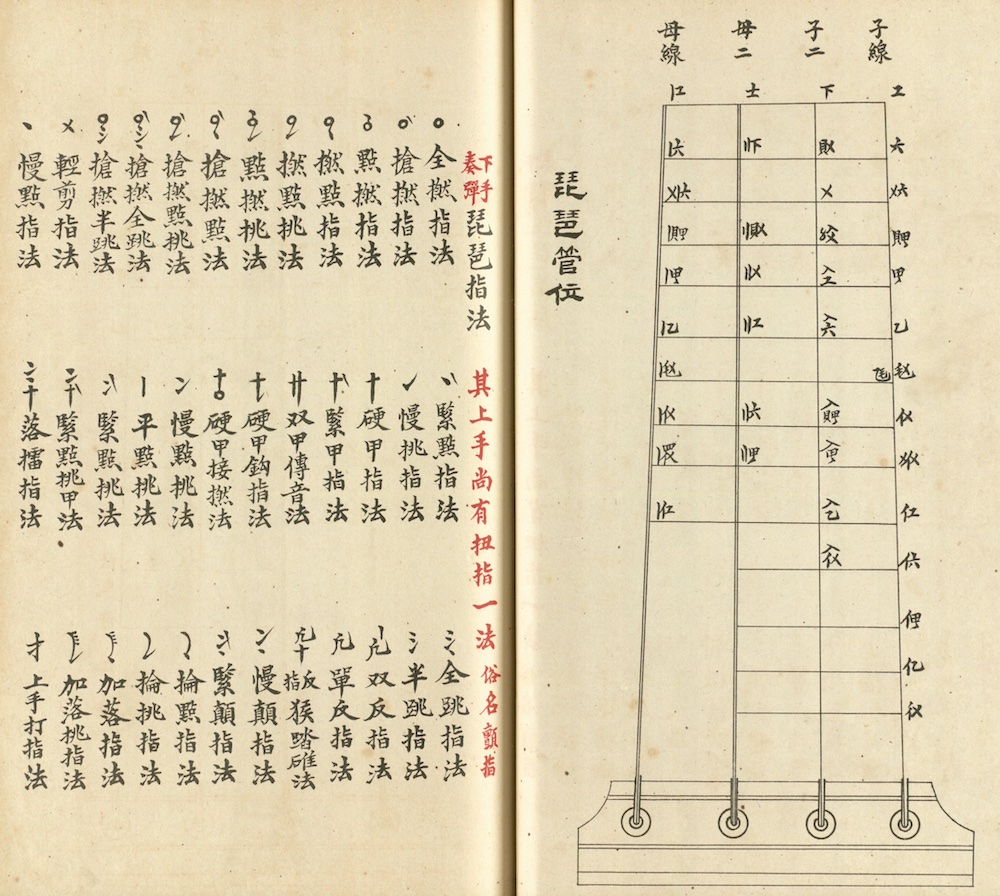Quannan zhipu chongbian 泉南指譜重編 "Revised collection of vocal and instrumental suites of southern-style music from Quanzhou", shortly called Quannan zhipu 泉南指譜, also called Quannan zhipu daquan 泉南指譜大全, is a collection of tablatures and scores of melodies for instruments and voice from the province of Fujian. It was compiled by Li Hong 林鴻 (born c. 1862), courtesy name Jiqiu 霽秋, during the late Qing period 清 (1644-1911). Li hailed from Xiamen 廈門, Fujian, and was a famous player of the lute (pipa 琵琶), and also a calligrapher and painter. His collection of local tunes was finished in 1912 and first printed in 1922 in Shanghai. Lin Hong has also written a unpublished collection called Nanqi jingxuan 南曲精選 "Selection of fine tunes from the South" that includes about 600 melody patterns.
The Quannan zhipu is the oldest collection of southern-style music (nanyin 南音). The tunes of the collection are commented on, and Lin's work is therefore an essential source for the study of music from the region of Fujian. In the local custom, music accompanying songs is called zhi 指, or, in the case of a suite, zhitao 指套, while music without a singing voice was called pu 譜. The term lingqu 零曲 or danqu 單曲 refers to tunes that are sung without musical accompaniment.
The collection is divided into six parts, each of which bears the name of one of the "six arts" (liuyi 六藝), namely rites (li 禮), music (yue 樂), archery (she 射), charioteering (yu 御), writing (shu 書) and arithmetics (shu 數). The first and most significant part of the book includes the preface, the guidelines of the compilations, and an introduction into the music instruments lute (pipa), the vertical bamboo flute (xiao 簫), the traverse flute (di 笛), two-stringed lute (erxian 二弦), three-stringed lute (sanxian 三弦), and clapper (paiban 拍板). The chapter then goes on the describe the most important general features of singing, and then investigates the texts of each of the 45 suites included in the collection. The following part is a kind of musicography in two parts, the first including 132 melody patterns (qupai 曲牌) of 45 suites of the nanci 南詞 style, the second 88 melody and rhythmic patterns of 13 tunes of the nanpu 南譜 type. For the latter, only the rhythmic claps are indicated, not the tones. It is important to note that the customs of noting down Fukienese tunes were different from those of other parts of China and deviated from the standards of Beijing that became the base of the modern notation customs in China. The study of the Quannan zhipu, therefore, makes necessary the learning of these local methods.
 |
Image showing the strings and frets of a pear-shaped lute (pipa 琵琶), and adding in the respective places the signs used for tablatures. The list on the left describes finger techniques and the respective notation symbols. From Taiwan Music Institute (Taiwan Yinyueguan 臺灣音樂館). |
The rest of the book includes the scores of 45 suites from Fujian, written with notes (gongchepu 工尺譜, a special reading). For all music pieces, the name of the tune is given, the type of the suite, the musical mode, the name of the melody pattern, and the text. Concerning the melody, notes are given to the method of playing the strings and the order of touching them, the time measure and rhythm, as well as the treatment of surplus syllables not prescribed in the melody patterns (chenzi 襯字).
The last volume includes the scores of 13 melodies for individual instruments.